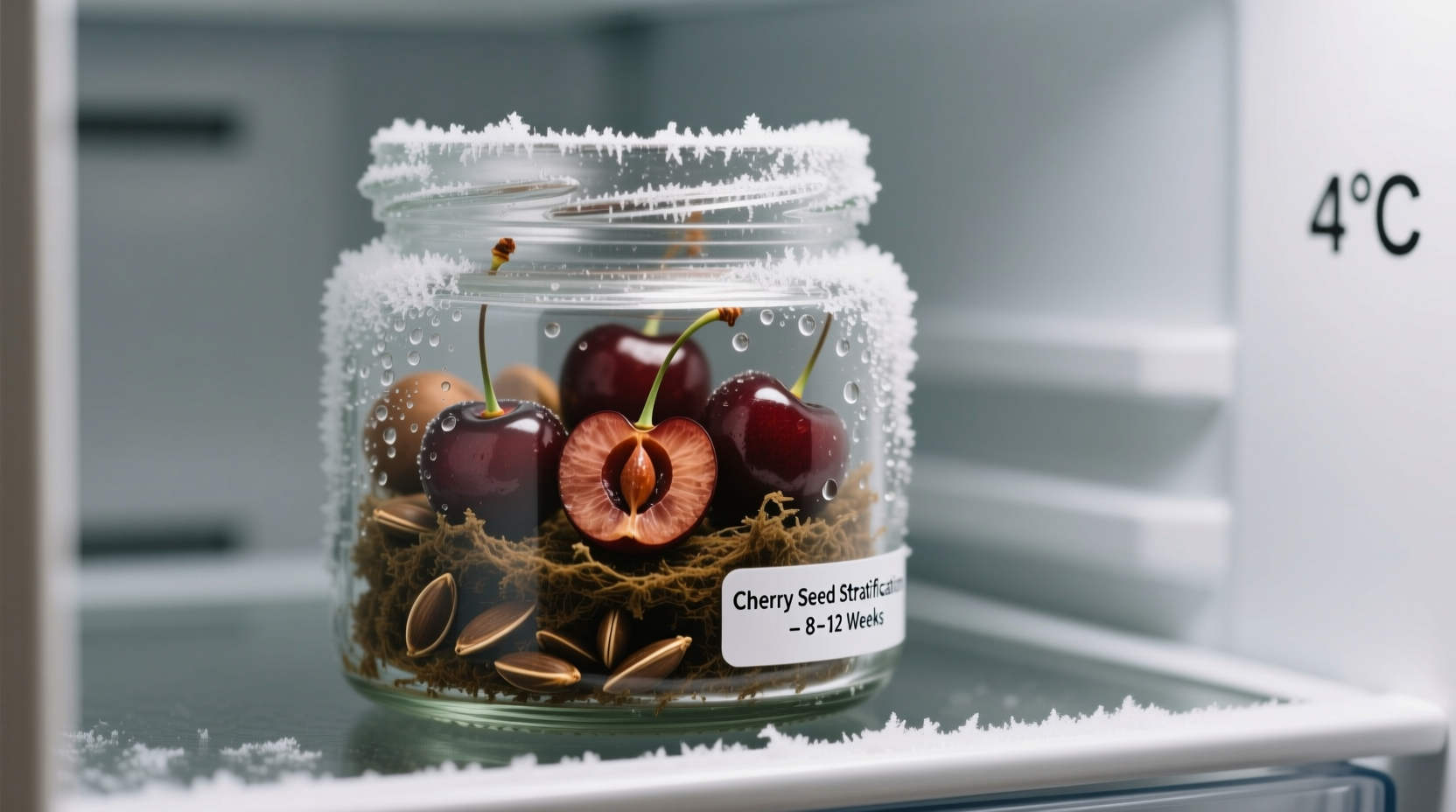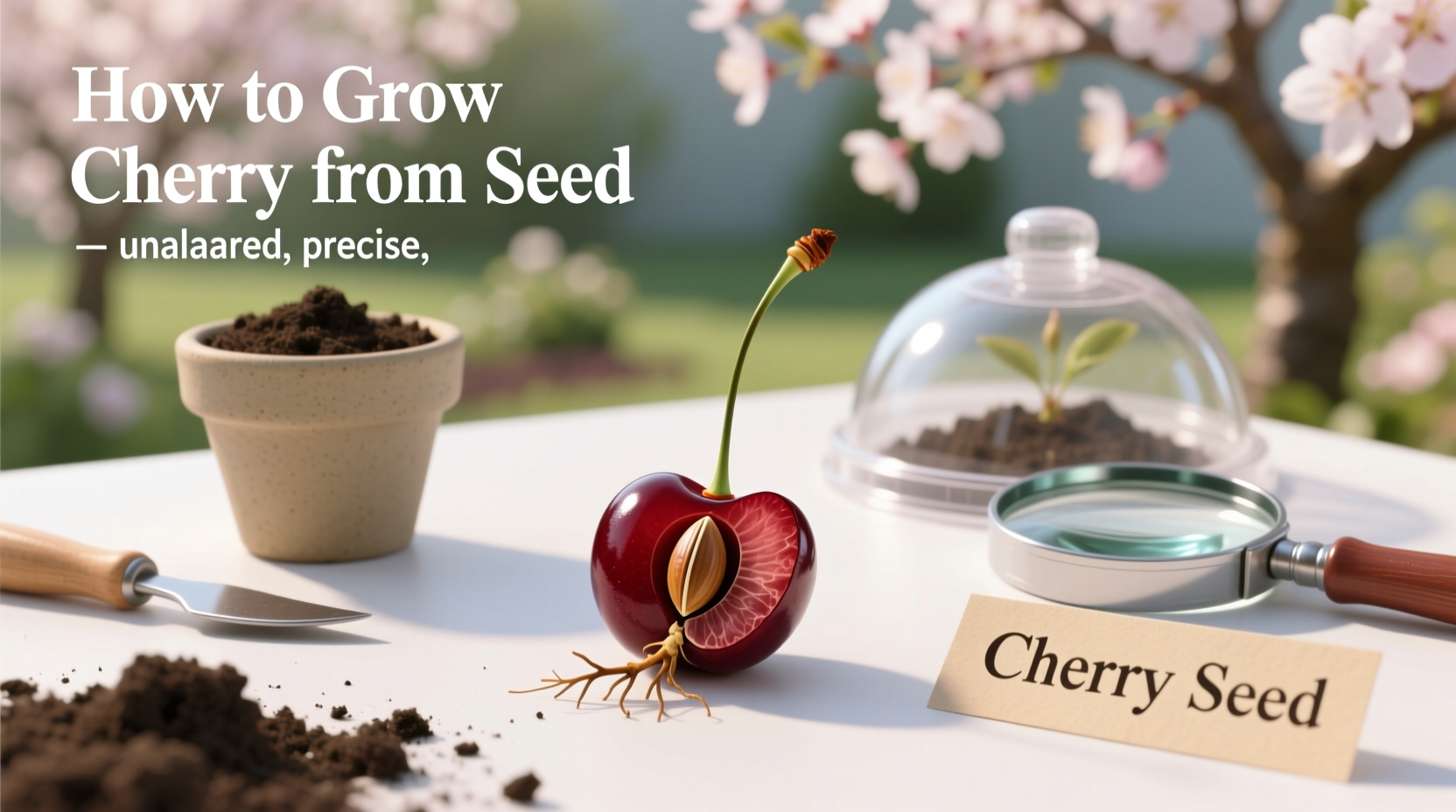Why Growing Cherry Trees from Seed Isn't What You Expect
Many gardeners dream of growing a cherry tree from the pit of their favorite fruit, but reality often differs from expectation. Unlike many plants, cherry trees (Prunus avium for sweet cherries, Prunus cerasus for sour cherries) grown from seed rarely produce fruit identical to the parent tree due to genetic diversity. Commercial orchards almost exclusively use grafted trees to ensure consistent fruit quality.
"Cherry seeds contain a genetic lottery," explains horticultural experts at the Oregon State University Extension Service. "While you might get a superior tree, more often the fruit will be smaller, less flavorful, or the tree may lack disease resistance."
When Growing from Seed Makes Sense
Despite these challenges, growing cherry trees from seed has legitimate purposes:
- Creating rootstock for future grafting
- Developing new varieties through selective breeding
- Enjoying the educational process of tree propagation
- Establishing trees in regions where commercial varieties aren't available
| Cherry Type | Stratification Required | Time to Fruit | Fruit Consistency |
|---|---|---|---|
| Sweet Cherries | 100-140 days | 5-7 years | Highly variable |
| Sour Cherries | 90-120 days | 3-5 years | Moderately variable |
| Dwarf Varieties | 95-130 days | 4-6 years | Variable |
The Complete Step-by-Step Process
Step 1: Selecting and Preparing Quality Seeds
Not all cherry pits will germinate successfully. For best results:
- Choose pits from fully ripe, locally grown cherries (imported cherries often come from trees treated with growth inhibitors)
- Remove all fruit residue by gently scrubbing under running water
- Air-dry pits for 2-3 days away from direct sunlight
- Test viability by placing in water—seeds that sink generally have better germination potential
Step 2: The Critical Cold Stratification Process
This mimics winter conditions necessary for cherry seed germination. The University of Minnesota Extension confirms that skipping this step results in near-zero germination rates.
Proper stratification technique:
- Moisten a mixture of equal parts peat moss and sand until damp (not wet)
- Place seeds in a labeled plastic bag with the mixture
- Store in refrigerator at 33-41°F (1-5°C)
- Check monthly for mold and moisture levels
- For sweet cherries: 100-140 days; sour cherries: 90-120 days

Step 3: Planting Your Stratified Seeds
After the cold period, plant your seeds immediately:
- Use 4-6" pots with drainage holes filled with well-draining potting mix
- Plant seeds 1-2" deep with the pointed end down
- Water thoroughly but avoid waterlogging
- Place in warm location (65-75°F/18-24°C) with indirect light
- Germination typically occurs within 2-8 weeks
Step 4: First-Year Care for Seedling Trees
Cherry seedlings require careful attention during their first growing season:
- Water when top inch of soil feels dry—avoid both drought and waterlogging
- Provide 6-8 hours of direct sunlight daily
- Fertilize monthly with balanced 10-10-10 fertilizer at half strength
- Protect from extreme temperatures (below 25°F/-4°C or above 95°F/35°C)
- Watch for aphids and other common pests
Realistic Timeline and Expectations
Understanding the long-term commitment is crucial when growing cherry trees from seed. The USDA Forest Service notes that stone fruit trees follow predictable growth patterns:
| Time Period | Expected Development | Care Focus |
|---|---|---|
| 0-3 months | Germination and first true leaves | Consistent moisture, protection from elements |
| 3-12 months | 1-3 feet of growth, developing root system | Regular watering, gradual sun exposure, pest monitoring |
| 1-3 years | Establishing tree structure, possible flowering | Pruning, winter protection, soil nutrition |
| 3-7+ years | First fruit production (if at all) | Pollination support, disease prevention, proper harvesting |
Advanced Considerations for Better Results
When to Consider Grafting
For those serious about fruit production, grafting your seedling with a known variety after 2-3 years significantly improves fruit quality. The University of California Agriculture and Natural Resources recommends waiting until your seedling reaches pencil-thickness (about 1/4") before attempting grafting.
Climate and Variety Selection
Cherry trees have specific climate requirements:
- Sweet cherries generally require 700-900 chill hours (temperatures below 45°F/7°C)
- Sour cherries need 1,200-1,500 chill hours
- Some newer varieties like 'Stella' are self-fertile, while most require cross-pollination
- Zones 5-7 typically provide ideal conditions for most cherry varieties
Troubleshooting Common Problems
When growing cherry trees from seed, you may encounter these issues:
- No germination: Insufficient stratification time or poor seed viability
- Weak growth: Inadequate sunlight or nutrient-deficient soil
- Leaf discoloration: Often indicates improper watering or nutrient imbalance
- No flowering: Tree may still be too young or lack proper chill hours
Is Growing Cherry Trees from Seed Worth It?
For patient gardeners interested in the process rather than immediate fruit production, growing cherry trees from seed offers a rewarding experience. However, if your primary goal is reliable, high-quality cherry production, purchasing a grafted tree of a known variety remains the most efficient approach. Many home orchardists find value in growing seedlings as rootstock for future grafting projects, combining the satisfaction of propagation with the reliability of proven varieties.











 浙公网安备
33010002000092号
浙公网安备
33010002000092号 浙B2-20120091-4
浙B2-20120091-4